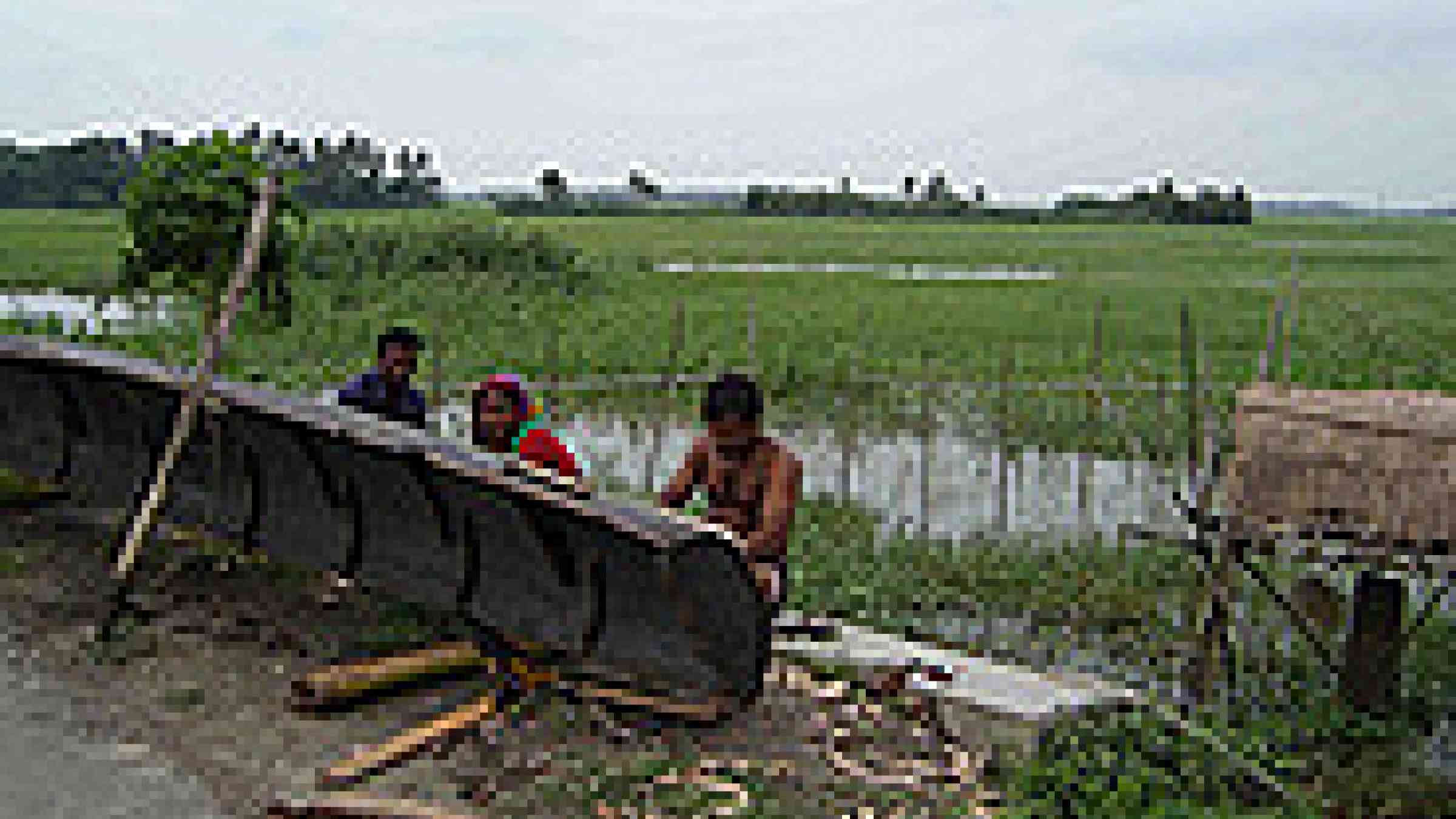
Working in one of the most disaster-prone countries in the world, Bangladeshi aid groups have learned that well-intentioned disaster relief programmes without community participation do little to protect those communities in the long run.
“Communities have been living with disasters for much longer than we have been talking about disaster risk reduction,” said Dilruba Haider, a director of NGO Bangladesh Disaster Preparedness Centre (BDPC).
“Unless you involve communities and give them the feeling that this is their project, as soon as you withdraw, the whole thing collapses.”
A good example of community involvement was when the Swiss Agency for Development and Cooperation contracted out the construction of four cyclone shelters in Bagerhat District in the far southwest of the country - and BDPC engaged communities to select the sites and oversee the work.
These shelters contrast with much of the prior work nationwide, Haider said.
“In the coastal belt we have more than 2,000 cyclone shelters, many of which have already become shabby and unusable. Government and donors built them and then they go out of the area and the community just sees a building,” she said.
Changing weather patterns, widespread poverty and a location in the world’s largest delta puts the country at risk of multiple perennial disasters.
The southern coastal areas are particularly vulnerable to the effects of increasingly volatile weather, said Reuben Marandy, World Vision’s manager of humanitarian and emergency affairs.
“Usually from June to August we have monsoon season, but the rainfall has decreased significantly, and so rice crops are not being planted; the season is running out and a food shortage may happen,” he said.
Getting villages prepared to move their families and preserve food means they have a better chance of being able to adapt when disasters strike, he added.
But this is not always easy.
With about 35 percent of the population in Bangladesh’s six largest cities living in slums, according to UN Development Programme, interesting the country’s poorest in disaster preparedness means addressing their most basic needs.
“Normal health, livelihoods, education - those are their priorities. In rural communities, it’s the same. Most of them prioritize their livelihoods,” said Michiel Slotema, NGO Plan International’s disaster risk reduction adviser.
Raised village
For Munjela Bewa, a 28-year-old widow and mother of two, finding a place to live that would not flood was a priority. Gono Gobeshona, a local NGO, involved her community to create a solution.
“The organization first shared what they wanted to do and then asked us what our problems were,” Bewa said.
She now lives in Char Kaijuri, a raised village in the northwestern district of Sirajganj.
Located on the River Jamuna, Sirajganj is one of the country’s most flood-prone areas. With that in mind, Gono Gobeshona, with support from Action Aid, worked with local people to create a “raised cluster village” built on land above the area that usually floods.
Most residents moved to Char Kaijuri to settle on government-owned land after their homes were destroyed in surrounding villages due to river erosion.
mc/nb/pt/cb